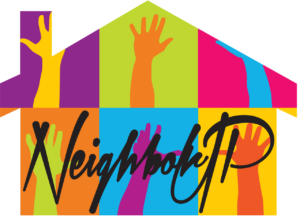How to Apply for an Action Grant
Neighbor Up Action Grants are meant to be accessible to grassroots residents in Cleveland and East Cleveland; you do not need a grant writer or consultant to work on your application. Just follow the steps below.
You and at least two other people who aren’t related have an idea for a project or program that would make a positive difference for people in your Cleveland or East Cleveland neighborhood. Agree on the purpose and intentions of your project together.
Individuals may not apply on their own; it’s all about ‘Neighboring Up’ to take action.
Before You Begin
Attend a Neighbor Up Action Grant Workshop to learn how to complete the application. These sessions provide an excellent overview on the purpose of the grants, decision-making criteria by the Grant Making Committee, tips on completing your proposal, and more.
We encourage you to join us at one or all of the following sessions (you did not need to register for these sessions):
- Sessions starting again in June 2024
Sign Up for One-on-One Grant Proposal Assistance
- Reach out to us at 216-229-0555 and sign up for sessions starting again in June 2024.
Step 1
Decide on a name for your project, and what neighborhood you will start with/focus on. Decide which individual will serve as the point of contact for the grant.
Step 2
Choose a community and a focus area that best describe your project.
- Arts & Culture includes initiatives that focus on literature, theater, music, dance, ballet, painting, sculpture, photography, motion pictures, architecture, archaeology, history, natural history, or the natural sciences.
- Circular Economy/Sustainability includes initiatives that reuse products, repair products, and renew land to reduce our environmental impact related to Climate Change. A circular economy diverts waste from the landfill and reduces pollution, keeps products and materials in use and restores and renews the natural system. Examples include clothes swaps, repairing bicycles, sharing rides, community gardens, urban farms, beekeeping, saving water, using renewable energy sources.
- City Repair/Land Reuse includes initiatives that take vacant land and make into a park or gathering space, paints alleys and walkways, natural building, beautification projects.
- Civic Participation includes initiatives that encourage voting and civics education, such as Get Out the Vote campaigns, voter education, candidate forums, issue education and mobilization, or the rights and duties of citizenship. These grants cannot be for a specific candidate.
- Communications includes initiatives that improve the transfer of good, timely and accurate information and stories within and across neighborhoods. Neighborhood newsletters, neighborhood newspapers, websites, social media.
- Digital Equity includes initiatives that support all individuals and communities to have the information technology necessary to participate in society.
- Economic Interdependence includes initiatives where people swap, share, co-own, and co-create together. Examples include funds for local, small business associations to implement an initiative, local hiring initiatives, co-operative development, local buying initiatives, sharing economy (bartering, ride shares, time banks, etc.)
- Education Equity includes initiatives that support and promote learning for all children and adults, where students have access to opportunities, resources, and support they need at the right moment in their education so they are prepared for success. Initiatives include providing resources (book bags, school uniforms, supplies, etc.), developing early childhood co-operatives and playgroups, creating learning pods, college exposure trips, after school programs, literacy initiatives, etc.
- Get Outside includes initiatives that welcome people from a variety of backgrounds into public spaces. Grants are intended to support people finding new ways to use outdoor spaces and overcoming the barriers to getting outside. Examples include skiing, snow shoeing, camping, use of public parks, summer camps, etc.
- Health Equity includes initiatives that work towards everyone having a fair and just opportunity to be as healthy as possible. Examples include initiatives that support healthy eating and active living or work address to improve neighborhood safety, reduce infant mortality, address trauma and mental health, provide better access to healthy food, better access to medical care, and/or reduce obesity.
- Neighboring initiatives connect residents of a single geographic area across lines of difference to build more trusting, caring communities.
- Racial Equity includes initiatives that work to build understanding of racial disparities and a willingness to adopt practices that create equitable opportunities for all. Examples include education on the history of white supremacy, initiatives that support people of color and indigenous people’s cultural heritage, conversations and action that bridge understanding on racial oppression, join or create a movement, spotlighting black or brown led organizations through storytelling, and initiatives that create opportunities for people who have been historically marginalized because of their race.
Step 3
Decide on a fiscal agent for your grant. The fiscal agent must be a nonprofit under section 501c3 of the US tax code.
Step 4
Develop a budget that includes a grant request of $500-$5,000, along with matching funds in volunteer time, in-kind donations or other funds raised. You can use this sample budget template.
Step 5
Review the application questions and formulate responses. You can download them here or view them inside the grants interface.
Step 6
Ask your partners to provide letters of support.
Step 7
Complete your application and submit it by the deadline. You can do this two ways:
- Log into our Grants Interface, creating an account for yourself if it’s your first time.
- Download and respond in this Word Document and download and respond in this Word Budget, then mail or drop off a hard copy of the proposal and budget to the Neighborhood Connections Office. To be accepted, it must be postmarked no later than the date of the proposal deadline.

